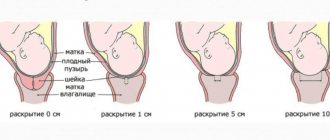Almost all of us know how to get sexual pleasure. Many people love it and would like to experience it again and again. But not everyone can feel a real orgasm. The difference between these two concepts is that we get pleasure from sex on an emotional level, and orgasm on a physiological level. That is why it is not difficult to understand what is what.
Orgasm is divided into several types: genital, breast and whole body orgasm. At the same time, genital orgasm is the most common among its kind. And although such an orgasm does not last long, nevertheless, the sensations after it leave a significant mark on your subconscious. In turn, genital orgasm is divided into three more subtypes: vaginal, clitoral and uterine, they are all interconnected, so we will consider all three.
Vaginal orgasm
The methods of arousal for experiencing this orgasm are associated with the muscle that is located in the lower part of the vagina. But an undeveloped muscle, which is typical for most women, negates the possibility of such an orgasm. Therefore, only a few can experience a vaginal orgasm. In order to become aroused, it is necessary to synchronize the contraction of the vagina and the lifting of the pelvis.
Clitoral orgasm
Clitoral orgasm occurs due to stimulation of the clitoris. In most cases, it is experienced by girls who masturbate. To do this, after they are left alone, they turn on a film containing scenes of a pornographic nature, and, being in a completely relaxed state, stimulate their clitoris. It is not so easy to get such an orgasm with a partner, since relaxation plays the most significant role, but with a man it is very difficult to be in such a state.
Uterine orgasm
For some reason, arousal of the uterus is not considered by doctors as thoroughly as other types of orgasm. However, many women experience it, so it is worth giving it the right to life. Strong arousal occurs as a result of the penis irritating the cervix, causing it to contract. But this is not always possible due to the fact that not every man has a penis that can reach the cervix, or it happens that during sexual intercourse it simply passes without even touching it.
In order to prevent this from happening and the stimulation of the uterus still causes a storm of emotions in you, you need to know a few secrets. The first and very simple way is to simply change your position. The pose will especially help when you lie on your back, the man is on top of you, and at the same time your legs are pulled up to your stomach. Another position that allows you to feel the excitement of the uterus is when a man, lying on his back, holds a woman sitting on him with her legs tucked in by the waist.
Another reason why it is impossible to experience a uterine orgasm is that the uterus is not positioned correctly in your body. But that’s not scary either. To keep the uterus in place, you need to change your position again. This time it is best for the woman to lie on her stomach or side.
During pregnancy
There are many myths associated with sex life while pregnant. If the process proceeds without complications, then there is no ban on intimate life. Pleasure and excitement during pregnancy have a beneficial effect on both mother and child:
- increased blood flow saturates the placenta with oxygen, which eliminates hypoxia and related complications;
- the release of endorphins has a positive effect on both the mother’s mood and the baby’s condition;
- Contractions of the uterus during orgasm, as well as the muscles of the vagina, are a natural process that does not interfere with the smooth course of pregnancy.
Immediately after intercourse, the child’s active movements are noted - there is nothing dangerous in this, this is how he reacts to hormones and oxygen saturation.
Threat
The threat of miscarriage, exacerbation of certain chronic diseases during pregnancy, and abnormalities in organ development can become a temporary ban on sexual activity. The release of oxytocin, contractions and active frictions can trigger labor, so up to 38-40 weeks this can be dangerous for the baby.
Causes of hypertonicity of the reproductive organ
When carrying an unborn child at an early stage, it may turn out that the uterus and its cervix are in an excited position or so-called tone. This condition may be due to a violation of hormonal concentrations in the organs of the reproductive system. Hypertonicity is often associated with a decrease in the level of progesterone hormone production. Due to a deficiency of the previously mentioned hormone, a spontaneous miscarriage may occur.
As practice shows, increased tone of the uterus and its cervix can be caused by the following factors:
- Development of hyperandrogenism;
- Genital infantilism;
- Hyperprolactinemia.
Each of the above factors is directly related to the hormonal level of a pregnant woman. An equally common cause of excitement (tension) of the uterine body is genital infantilism. This process indicates insufficient development of the uterus and its cervix. When the size of the reproductive organ does not correspond to age-related changes, the uterine body goes into a state of tension (tone) caused by the progression of pregnancy. The excited state of the described reproductive organ can be provoked by fibroid tumors, as well as endometriosis. Multiple conceptions, a large amount of fluid (amniotic fluid), as well as the large size of the embryo can cause stretching of the muscle tissue, resulting in a reaction that causes excitement and increased tone of the uterine body.
Additional information about a disease such as endometriosis can be found in this video:
To establish the excited state of the reproductive cavity (hypertonicity), treating specialists use various diagnostic methods.
How can you establish the hypertonic state of the uterine body cavity?
Detection of an increased tonic (excited) state of the uterine body and its cervix can be carried out in various methodological ways, in particular:
- Palpation (palpation);
- Ultrasound diagnostics;
- Tonuometry.
In the last trimester of pregnancy, the uterine body leaves the area where the small pelvic organs are located. Its tonic state can be determined by visual inspection and palpation through the anterior wall of the peritoneal surface. In a normal position, the abdominal wall is soft, and the lower third of the abdomen is in a relaxed state. With increased tone, the abdominal walls are hard, and the obstetrician-gynecologist, by palpating, can feel the tension in the muscle layer.
As a rule, transabdominal ultrasound diagnosis is performed during gestation. During the examination, the condition of the uterine cavity and cervix is determined. The treating specialist can detect increased tone in any part of the wall or total excitation. With partial hypertonicity, the pregnant patient does not feel this. In case of total stress, the expectant mother can notify the doctor about the presence of pathology on her own. In the early stages of fetal development, in the case of an increased tonic state, there is a possibility of separation of the placental layer. The transabdominal ultrasound diagnostic procedure is shown in the photo.
The photo shows the providence of transabdominal diagnosis
In modern medicine, a tonuometry procedure is performed. Using a special apparatus, the reproductive organs, including the cervix of the uterine body, are examined through the peritoneal walls. The condition of the muscular layer of the uterus is determined using a specialized sensor.
Awakening
The anatomy of an orgasm actually starts with a buildup—as most women can attest, an orgasm is a full-body experience, often involving more than one erogenous zone (though most of the time, clitoral stimulation is key). For most women, it takes an average of 20 minutes to orgasm. Meanwhile, your body is going through changes that increase sensitivity and arousal and prepare your body for the big O. Some of these changes are visible, but others are internal and can only be felt.
That warm, tingling sensation you start to feel when you get aroused is associated with an increase in your heart rate and blood pressure, and most (but not all!) of this blood is directed towards your genitals. The clitoris, which is made up of more than 8,000 individual nerve endings, swells and expands. As you approach climax, your clitoris will be pulled up under the clitoral hood (the sheath of skin that protects your clitoris). Your inner labia also begin to swell and your outer lips become separated—this is often accompanied by a darkening of color as more blood fills the tissue.
While it's true that 90% of women can't orgasm from intercourse alone, there are ways to increase arousal and bring you closer to the edge. Try a slow, sensual, full body massage while you undress. Or try a couples massager, which is a vibrator used by a woman during sex that rubs against the clitoris and g-spot while your partner moves in. This creates intense sensations for both of you and leaves your hands free. Or try both, one after the other. It will take you to figure out what you like, so enjoy the search.
Your vagina begins to secrete fluid to lubricate itself to make sex more comfortable—often the more aroused you become, the “wetter” you become. However, this is not always enough - and that's okay! This happens to many women for various reasons. Just be sure to keep your women's moisturizer on hand. Along with this lubrication, the lower part of the vagina becomes narrower and the upper part lengthens as your cervix and uterus move upward slightly, creating more room for your partner's penis.
Big O
When the peak moment finally reaches, your muscle spasms will begin, especially in the pelvic area. It is the combination of the walls of your uterus, vagina, anus and pelvic floor, causing waves of pleasure throughout your belly and the rest of your body. Interestingly, scientists have discovered that the strength of your orgasms may be tied to the health of your pelvic floor muscles. The more toned your pelvic floor muscles are, the better they contract during orgasm, adding to the pleasure you feel. The easiest way to strengthen these muscles is to start doing Kegel exercises, which lift your pelvic floor upward, holding the contraction for a few seconds, then relaxing and repeating. As you train, you progress through progressive levels to achieve instant strength and its sexual benefits!
Depending on the strength of your climax, it can last from a few seconds to a full minute. The number of contractions also varies, but the normal range is from 1 to 12 contractions, each lasting about a second. And don't think sex and orgasm are an entirely body-based experience—your brain gets in on the action, too, releasing chemicals like oxytocin (which helps create intimacy) and dopamine (a natural painkiller).
Remember that every orgasm is different and every woman experiences her orgasms differently. However, better understanding how your body (and mind) responds to sexual arousal can help you unlock your abilities. Take the time, either on your own or with your partner, to figure out what you like and find your own rhythm - we all know that orgasm is great fun!
The cervix is close to the exit
› Gynecology › Cervix › The cervix is low
The position and structure of the cervix changes depending on the stage of the menstrual cycle - it may be close, low or far from the outlet. Knowing the rules of self-diagnosis, you can calculate favorable days for conception.
Why do condition assessments take place?
A good gynecologist can tell a lot about the state of the female body by the position of the cervix relative to the vaginal opening. But to confirm the diagnosis it is necessary to undergo an examination.
What an inspection can show:
- if during pregnancy the cervix is shortened, it is necessary to urgently take measures to prevent spontaneous abortion;
- immediately before delivery, the position of the cervix can determine the degree of readiness of the birth canal - it should be smooth, and at least one finger should enter it;
- based on the position of the cervix - close to the outlet or high - the gynecologist judges the phase of the cycle;
- characterization of the discharge also occurs when examining the vaginal part of the cervix;
- instrumental diagnostics of the cervix makes it possible to detect the presence of cancer and precancerous conditions at an early stage, when other symptoms of dangerous pathologies are still absent.
At home, women conduct self-diagnosis, find out how low and close to the exit the organ is located to determine dangerous or favorable days for sex.
Knowing on what days the cervix is low or high from the exit, you can understand that conception occurred before the delay; the method is considered as effective as hCG tests or blood.
Located close to the exit
The cervix connects the vagina and the uterine cavity and has a round shape with a small notch in the middle. It plays the role of a protective barrier and drainage. At different stages of the cycle, this organ functions differently - sometimes the cervix is located far from the exit, on other days it drops low. Depending on its location, you can calculate the time of ovulation.
On what days of the cycle is the organ located low to the exit:
- Immediately after the end of menstrual bleeding, the least favorable days for conception begin. The neck acquires a hard and elastic structure, closes, and descends low towards the outlet. The amount of mucus discharge is minimal, which reduces the risk of infection, since the mucus plug remains in the cervical canal.
- Preparation for ovulation - days 9–12, the cervix begins to change its position, it is no longer located so close to the exit, it opens a little. The epithelium becomes softer, sticky mucus appears, which moisturizes the genital tract. The probability of getting pregnant on such days is no more than 5%.
- Starting from the 13th day, the amount of estrogen in the blood increases, the cervix at the maximum distance from the exit becomes loose. The cervical canal and external os open, and the mucous plug comes out. The structure of the discharge is similar to chicken protein, which facilitates the easy movement of sperm to the egg - this period lasts until the 15th day, which is most suitable for fertilization.
- From the 16th day, progesterone begins to be actively produced, the cervix closes, becomes hard, elastic, located close to the outlet, the pharynx and cervical canal narrow. The discharge becomes viscous, has a sour smell, and a plug forms. The chance of getting pregnant is minimal.
- 12–14 days after ovulation, if fertilization of the egg has not occurred, menstrual bleeding begins, and the endometrium and blood come out through the slightly open external pharynx. The cervix is located as low as possible and has a soft consistency.
This happens with a standard cycle of 28 - 32 days. With a short cycle (21–25 days), the cervix is close to the exit from the first to the fifth and from 13–15 days of the cycle. Accordingly, with a length of 35 - 45 days, the cervix drops close to the exit in the first 7 days of the cycle and the last 6 - 8 days before menstruation.
Only during ovulation is the cervix high from the outlet; on all other days it is low.
If a woman notes that the cervix is constantly low, then this sign may indirectly indicate anovulatory cycles. In this case, you should visit a gynecologist, perform folliculometry using ultrasound and donate blood for sex hormones.
Preparing for the self-diagnosis procedure
During self-diagnosis, a woman has to rely on her own tactile sensations. You need to understand all the intricacies of finding the cervix, understand how close it has descended, and sometimes this is not easy. But after a few cycles no difficulties will arise - it will be easy to determine whether the organ is close or high and what its structure is.
How close the organ is located - self-diagnosis rules:
- It is better to start the examination immediately after the end of menstrual flow - the procedure should be done at a certain time in the same position;
- you need to thoroughly treat your hands with an antiseptic, it is advisable to wear sterile gloves, cut your nails short;
- It is not recommended to use cream and other hygiene products; you can apply a small amount of water-based lubricant to your fingers;
- the best poses to understand how close the cervix is - squatting or on the edge of a bathtub, sofa, lying on your back with bent knees, move one leg to the side, put it on a chair;
- to assess the height of the cervix from the exit, use the longest finger;
- all results should be recorded in a special diary to better determine trends in organ movement.
It is impossible to independently determine the location of the cervix, how close to the exit and how low in the presence of inflammatory processes and infections of the genital organs.
How to determine it yourself
At the stage of pregnancy planning, you can assess the location of the cervix relative to the exit yourself; this procedure is not complicated; you just need to act carefully and listen carefully to your own feelings.
The structure of the tissues of the organs of the reproductive system in women who have given birth and those who have not given birth is different - after the birth of a child, the external os of the cervix is not a depression, but a longitudinal slit.
Self-diagnosis steps:
- Take a comfortable position.
- Insert your finger into the vaginal opening to the maximum depth - the cervix is usually located at a distance of 5 - 7 cm from the entrance, the shorter the distance, the lower it is.
- Feel the cervix, evaluate its structure and density. It can resemble soft lips during ovulation, or be like a dense tip of the nose when it is not.
- Determine the degree of disclosure. At a closed cervix, the depression is small; with an open pharynx, the tip of the finger passes into it.
- Determining the degree of hydration - on days favorable for conception, the amount of vaginal mucus increases.
To determine ovulation, you can use additional methods - regularly measure your basal temperature. When a period favorable for fertilization approaches, it rises. The procedure should be carried out in the morning without getting out of bed.
If during palpation the cervix can be easily reached, this means that the cervix is low. If difficulties arise, this means a high location.







